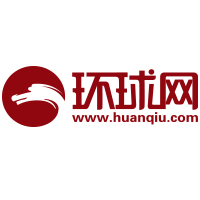
Multiple Chinese manufacturing hubs have released their foreign trade data for the first nine months, which all showed robust development momentum. Observers said that the upbeat figures highlighted the competitiveness and resilience of China's trade growth engine, with the nation's economic heavyweights maintaining their pivotal role while new export drivers continued to emerge.
In the first three quarters of this year, the foreign trade of Southwest China's Chongqing Municipality reached 581.98 billion yuan ($81.6 billion), a year-on-year increase of 12.3 percent, surpassing the national overall growth rate by 8.3 percentage points. Exports and imports were up 10.6 percent and 16.2 percent year-on-year, according to a statement on the local government's website on Sunday.
Foreign trade in Southwest China's Sichuan Province rose 3.6 percent year-on-year to 776.79 billion yuan, a new record high, according to data released by local customs on Saturday. Exports and imports grew 5.8 percent and 0.6 percent, respectively.
In South China's Guangdong Province, foreign trade reached 7.02 trillion yuan, up 3.8 percent year-on-year, which accounted for 20.9 percent of the national total. Exports and imports jumped 1.4 percent and 8.2 percent year-on-year, according to data released by local customs.
In addition to Guangdong, which is known as China's manufacturing hub, other economic powerhouses also recorded booming and dynamic foreign trade in the first nine months, significantly strengthening China's vibrant trade landscape.
For example, the exports of East China's Jiangsu, Zhejiang and Anhui provinces gained 10.4 percent, 8.3 percent and 15.9 percent year-on-year in the first three quarters, which all surpassed the national growth average of 7.1 percent, news portal thepaper.cn reported on Friday.
The Yangtze River Delta region, where the three provinces are located, is a major hub for China's foreign trade and economic development. The region's trade value accounted for one-third of the national total, the report noted.
"China's strong export capacity is reflected across various regions. While major economic provinces continue to play a leading role in driving foreign trade, new growth engines are also gearing up," Wang Peng, an associate researcher at the Beijing Academy of Social Sciences, told the Global Times on Sunday.
In the first three quarters, China's western region maintained strong momentum in foreign trade development, with total trade reaching 3.21 trillion yuan, up 10.2 percent year-on-year, according to data released by the General Administration of Customs (GAC) on Monday.
According to analysts, the western region's export growth is fueled by various factors, including the rapid development of emerging industries amid a nationwide industrial upgrade, as well as the build-up of more convenient global trade channels, such as the new western land-sea corridor and the China-Europe freight train.
In face of global economic uncertainty and lingering China-US trade frictions, China's foreign traders have become more adaptive and flexible in responding to market changes. Some are also ramping up efforts to diversify their export destinations with new designs and products.
A manager of a foreign trade company surnamed Wang, based in Zhejiang's Yiwu, which is dubbed as the world's largest wholesale hub for small manufactured items, told the Global Times on Sunday that the shipping cycle for her company's Halloween products has been extended significantly due to trade frictions between China and the US.
"Our business in the US has inevitably contracted, but meanwhile, we have been making up for that with new designs catering to the European market. There's always a way out," Wang said.
In the January-September period, China's total goods imports and exports in yuan-denominated terms rose to 33.61 trillion yuan, up 4 percent year-on-year, according to GAC data.
In the first nine months of 2025, China's goods trade with Belt and Road partner countries totaled 17.37 trillion yuan, up 6.2 percent year-on-year, GAC data revealed. Trade with ASEAN, Latin America, Africa and Central Asia grew by 9.6 percent, 3.9 percent, 19.5 percent and 16.7 percent, respectively, while trade with other economies in the Asia-Pacific Economic Cooperation increased by 2 percent, according to the GAC.

